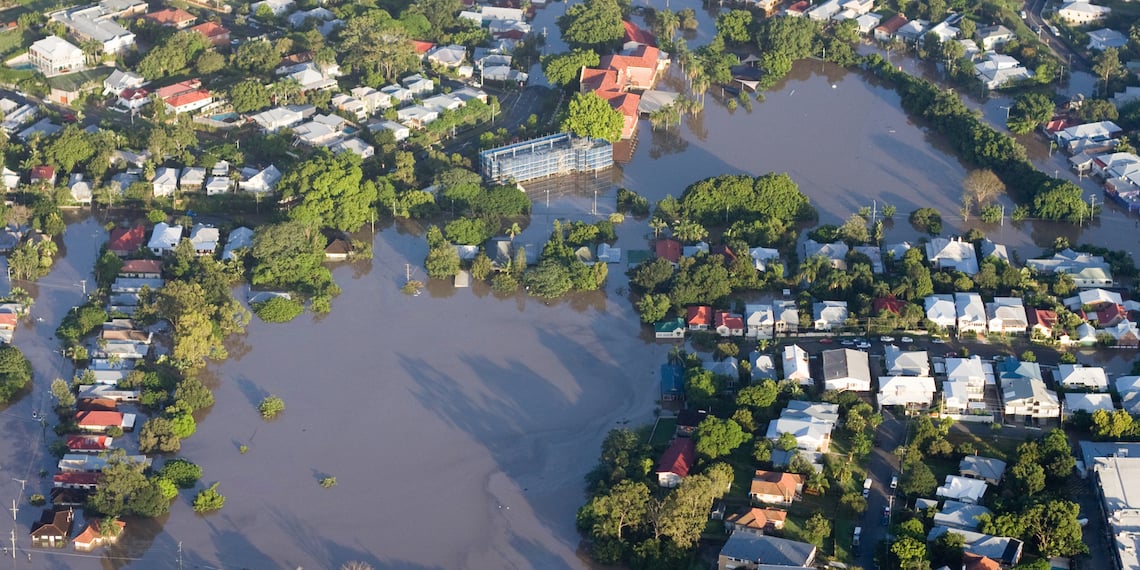New research links global warming to increased ENSO variability

New climate modelling research from the CSIRO has showcased the link between human-caused climate change and the increased variability of El Niño and La Niña events.
While the El Niño-Southern Oscillation (ENSO) naturally produces climate variability, stronger El Niño and La Niña events have been occurring more often in recent decades.
Led by CSIRO Environment Chief Research Scientist Dr Wenju Cai, the research published in Nature examined how the rapid increase in greenhouse gas emissions since the 1960s is related to the increase in ENSO variability.
Cai said it’s important to understand this link further as the impacts of extreme weather events continue to increase.
“Many of these extreme events are attributed to ENSO, including heat waves, drought, bushfires, floods, landslides, and also disease outbreaks in some of the areas where these events have occurred,” he said.
“And, if you look at the effect on the global economy, these events can cost trillions of dollars in damage.
“A very important question is if climate change will make ENSO more extreme, and if those extreme events will be more frequent. This is why we spend a lot of our time studying how and why ENSO will respond to greenhouse warming.”
Exploring variability
When it comes to climate change research, Cai said one of the fundamental questions is whether or not global warming will affect El Niño and La Niña in the future.
“For future ENSO, we have actually made a lot of progress already. We have climate models around the globe – 43 of them – which support the work of the Intergovernmental Panel of Climate Change,” he said.
“These models run a set of future emissions scenarios, from business-as-usual through to meeting the Paris Agreement target of capping increase in warming to 1.5 degrees.
“The latest model suggests that under greenhouse warming conditions in the future, there is an increase of ENSO variability if you compare the 20th and 21st century. And there is a model consensus; about 80% of the models produced this increase.”
Cai said another key question is whether or not the increase in greenhouse gas emissions since the 1960s has already affected ENSO patterns, and how.
Analysing several simulations produced by the available global climate models, the researchers compared simulations from 1901 to 1960, with simulations from 1961 to 2020, with most of the results showcasing an increase in ENSO variability since 1960.
“We used all the data that we have to focus on ENSO from the 1900s. Prior to 1960, the quality of that data was also very low. The models might have biases here and there, but what comes out from the model is consistent,” Cai said.
“We find that if you look at the post-1960s, variability has increased compared to 60 years ago. And there is a consensus across models on the increase. So we now have modelling evidence that ENSO has already been affected by greenhouse warming.”
Next questions
Establishing that increased greenhouse gas emissions are related to increased ENSO variability leads to more questions, Cai said, particularly in terms of what this increased variability will look like in future.
“We still have a lot of questions to answer. For example, will we start to see multi-year El Niño events? If you have a drought over another drought, the impact is not linear; the impact is exacerbated exponentially,” he said.
“Multi-year El Niño events are rare, but an El Niño may last longer. And when you are in a drought, a couple of extra months of no rain can have a big impact. So what would that impact be?”
Earlier this month, the Bureau of Meteorology issued an El Niño alert, meaning that there is around a 70% chance of an El Niño developing this year. Cai said there is still more work to do to be able to know how intense the next El Niño event might be.
“We are now expecting an El Niño and some scientists are suggesting that we could have a strong El Niño,” he said.
“When you look back at the data we do have, an El Niño preceded by a multi-year La Niña – like the one we experienced in 2020–22 – doesn’t happen very often, particularly three in a row, so we have little idea of what this upcoming El Niño will be like.”
Considering the three consecutive La Niña events that brought extreme flooding to Queensland, NSW, Victoria and the Northern Territory between 2020 and 2022, Cai said the increased atmospheric moisture caused by global warming will be felt regardless of whether or not these events become more intense.
“We are going to experience much more extreme rain under a warming climate,” he said.
“In a warming world, atmospheres hold more water, which makes rainfall much more intense. The atmospheric circulation is harvesting more moisture from a large area and dumping it in a localised region.
“For one degree of warming, the moisture content in the atmosphere increases by 7%. The increased flow of that atmospheric moisture is more intense regardless of La Niña being more or less intense.”



